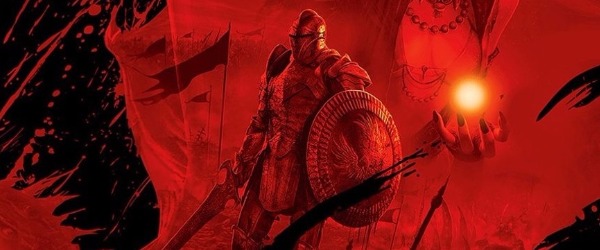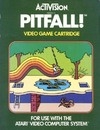
History of Video Games: The Birth of the Third-Party Development Model - Article
by Taneli Palola , posted on 05 September 2019 / 10,908 ViewsIn today's video game industry third-party developers are practically ubiquitous, playing a huge part in the success of almost every gaming platform around. For nearly 40 years this has been the accepted status quo, with franchises like Call of Duty, Final Fantasy, Assassin's Creed and Grand Theft Auto having acted as driving forces pushing the industry to ever greater commercial heights over the last several decades.
Of course, it wasn't always like this. There was a time when third-party development studios were an entirely foreign concept that simply didn't exist in any form in the video game space. Basically from the birth of video games until the late 70s all video games were made by the console manufacturers themselves, who effectively held a monopoly over their respective platforms and weren't exactly keen on relinquishing this hold.
Background

From around 1972 onwards the undisputed king of video games was Atari. The catalyst for the company's success atop the video game industry was the release of Pong, the first commercially successful video game ever released. Over the next several years Atari went from one triumph to another, notably with the release of the home version of Pong During Christmas 1975 and then later with the Atari Video Computer System (Renamed Atari 2600 a few years later).
The success of Atari was driven by the ingenious and innovative games being produced at a rapid pace by numerous in-house developers such as Al Alcorn (Pong), Warren Robinett (Adventure), Larry Kaplan (Bowling), and Bob Whitehead (Star Ship), among many others. However, while Atari as a company continued to grow in value and influence, the people behind the games that laid the foundation for this growth saw very few if any additional benefits from the success of their games.

The frustration towards Atari's policy of never acknowledging the people behind the firm's games did led to some very interesting landmark moments in the history of video games, among them the very first easter egg in gaming, when Warren Robinett added a secret room to Adventure where the player can find text crediting Robinett for the game's creation. However, this rift between Atari and the people creating the company's games grew larger, until something simply had to give.
By the time 1979 rolled around Atari had seen a notable shift in its corporate structure after Nolan Bushnell had sold the company to Warner Communications and Ray Kassar had taken over as CEO. Kassar's policies and lack of respect towards the firm's developers began to eat away at morale within the company, especially once a memo circulated showing that games made by David Crane, Larry Kaplan, Bob Whitehead, and Alan Miller alone had made around $60 million in a single year.
Bolstered by this revelation of their clear value to the company, the four went to Kassar to demand fairer compensation, as well as credit in the games they worked on. The CEO, for his part, flat-out rejected the entire notion, and according Crane stated that the four were no more important to the company than any assembly line worker putting cartridges into boxes. After that there was no going back and the four made the decision to leave Atari, with Crane and Miller leaving in August and Whitehead and Kaplan following soon after.
The New Vision

Following the split from Atari the four quickly set up their next, highly ambitious venture, starting an independent video game development and publishing company that would create games for the Atari 2600. Up until 1979 this was something that simply hadn't existed in any form, as all games on any given console had always been published by the console manufacturer itself. And, just like that, the third-party development model was born. The company behind it all was called Activision.
The name Activision was chosen specifically to spite Atari, as it would appear earlier in the alphabet and thus its games would be listed above Atari's in places like store catalogues. Ironically, a similar thing would take place in 1984 when Bob Whitehead and Alan Miller left Activision and formed Accolade, and then again when Greg Fischbach left Activision and formed Acclaim in 1987. Both names were chosen specifically so they would appear before their rivals when listed alphabetically. Pettiness runs deep in the video game industry, as you can see.
Fortunately, the new company had both the talent and funding to back up this confidence, and quickly set about producing its own games for Atari's console. The four defectors possessed extensive knowledge of the 2600 and its various quirks and limitations, allowing Activision's games to instantly distinguish themselves from all other games on the market. They knew exactly how games at Atari were made, so they could ensure that their games would visually stand out from the competition.

In addition, unlike Atari, which was still often relying on arcade to console conversions to drive the success of the 2600, Activision had no previously established brands or names upon which to build its business. This forced the developer to focus on entirely new, original titles from the start. While this was in some ways a hindrance early on, it also meant that Activision wasn't bound by any existing parameters or limitations carried over from previous releases.
Starting with its earliest releases Activision had set up certain guidelines by which all of the company's titles would abide by going forward. This included things like always using only the most appealing colour to make games stand out, or simply inventing countless new tricks to pull as much out of the hardware as possible. Games like Dragster, Fishing Derby, Boxing, and Skiing may not have left a long-lasting impact on the industry, but they did set the stage for Activision's later games to do so.
Legitimizing the Third-Party Model

Of course, Atari wasn't just going to sit back and accept this new upstart company jumping in on its turf without repercussions, especially once key figures in Atari realized the magnitude of the mistake they had made by letting some of their most talented game creators just walk out. So, as is tradition in corporate America, Atari sued Activision to try and shut it down, accusing the firm of copyright and patent infringement, as well as claiming that the new studio had access to various trade secrets.
Funnily enough, the lawsuit had little effect on Activision's development projects, likely much to Atari's chagrin as its lawyers continued to try and disrupt the developer's business and prevent it from releasing games on Atari's console. Despite these attempts, by the end of 1981 Activision had already released 12 different titles for the Atari 2600, and the pace with which it would release games would only quicken over the following years.

Activision had actually expected the lawsuit, having set aside a legal budget when the company was founded, and even creating its own development tools to avoid using any of Atari's official hardware. Naturally, that didn't stop Atari, which kept the lawsuit going all the way until 1982, when the case was finally settled. Ultimately, Activision agreed to pay Atari royalties for the games it developed, but this result also meant that the new company had effectively legitimized the third-party development model.
Activision now had free rein to develop games for Atari's system, and after having successfully established its own brand as a source of quality games in the eyes of the gaming public over the previous two years, the path was now clear for the developer to strike gold. However, by showing that the third-party development model was a viable way to do business, Activision had also paved the way for others to follow its example. The timer was now set on both Activision's window of opportunity and, unbeknownst to everyone at the time, on the industry itself.
Success Breeds Competition

The early 1980s were a hotbed for video game development, with numerous companies trying to gain at least a small piece of the market, especially once the doors were opened for any company to develop games on the biggest platform on the market. Atari and Activision naturally continued to bring their own games to the 2600, with the two companies alone creating titles like Pitfall!, River Raid, and Pole Position, all of which proved highly successful.
With the court decision effectively making the Atari 2600 and, by extension, all other consoles on the market open platforms that everyone could create games for, video game development suddenly became a very attractive prospect for a lot of different people and companies. The first half of the 1980s saw the birth of a number of successful and influential companies like Electronic Arts, LucasArts, MicroProse, Interplay, Origin, and Accolade, among numerous others.

Unfortunately, right beside the companies creating genuinely great and successful games were dozens upon dozens of low-rent copycat developers trying to cash-in on the video game craze. It took surprisingly little time for the market to become flooded with low-quality imitations of successful games, and the public soon began to take note of this fact. By 1983 the signs were already there, but it would take a little while longer for the bottom to fall out of the market.
Specifically, the timer ran out at christmas 1983. The number of great games wasn't necessarily getting smaller, but the number of horrible games had grown exponentially over the previous 12 months. By the time christmas rolled around there were literally barrels of cheap games available at shops around the country, made by companies that had failed to sell those games earlier and gone bankrupt.
Naturally, parents didn't initially realize that those games were of questionable quality until after they had bought them. All they saw was that they could buy anywhere between five and ten new games from the discount barrels for the price of one Activision or Atari title, and the effect was exactly what you might think. Sales of new games dropped drastically and soon the Atari 2600 was effectively dead; the industry had become a shadow of what it had been just a year earlier.
The Aftermath

Unlike many other video game developers Activision had been smart enough with its money and projects to survive the video game crash of 1983, but even it couldn't escape unscathed. Key figures at Activision knew well beforehand that the industry would eventually hit a ceiling and the market surrounding the 2600 would fall, but even they didn't expect the crash to be as sudden and drastic as it was.
Activision had set up a long-term plan well in advance to slowly spread its new releases to a number of different platforms, so as to not rely on a single system like the 2600 for too long. However, the market crash eventually happened so quickly that the company was caught off guard; business plummeted and stock prices fell hard. But the company had at least survived.
Unfortunately, things didn't stop there. Many key people ended up leaving Activision. Alan Miller and Bob Whitehead left in 1984 to form Accolade, Greg Fischbach left and eventually founded Acclaim, Larry Probst left to join Electronic Arts, David Crane left to found Absolute Entertainment, and many others followed their examples in the years following the crash. Then came 1986 and the acquisition of Infocom.

Infocom had found great success with a number of text-based adventure games like Zork throughout the early 1980s. Activision's then CEO Jim Levy was a fan of the developer's games, and due to the difficulties facing the industry as a whole felt that the two companies would be better off together. Of course, this turned out to be a mistake as text-based adventure games were at the end of their commercial viability, with developers like Sierra and LucasArts pushing the genre towards graphic adventure games.
All this together left Activision in fairly bad shape, with most of its key developers now in other companies, its financials in shambles, and even its name getting changed to Mediagenic in 1988. Even though the video game industry in North America had revived on the back of Nintendo's success with the NES, Activision/Mediagenic simply didn't have the resources to properly take advantage of this, and the losses ultimately became so massive that the company was sold to Bobby Kotick and several other investors in 1991.
Activision's Legacy

Even though Activision as a company has gone through numerous changes over its long history and its image has had its ups and downs, we can't forget just how massive of an impact it has had on the video game industry. At a time when independent third-party console developers simply didn't exist, David Crane, Larry Kaplan, Bob Whitehead, Alan Miller, and Jim Levy founded a company that fundamentally changed the rules surrounding video game development for consoles.
Without Activision and its founders the video game industry may have never reached the heights it has, and although the company today is far removed from the upstart Atari 2600 developer it started out as almost 40 years ago, it still commands a legacy on the level that very few others in the video game industry can make a claim to. Whatever your feelings toward Activision today, one should never disregard just how important the company was to the development of this industry in its early years.
Sources:
-The History of Activision (Gamasutra)
-The History of Activision (IGN)
-Easter Eggs: The Hidden Secrets of Videogames (Paste)
-What Went Wrong At Atari (Infoworld, November 28, 1983, p.151-158)
-Atari Compendium
More Articles
Good article! This article points out the inherent double edged sword with third party companies, which still exists today. Some third party games are just mind-blowingly great, and yet there is always plenty of third party shovelware. Even today things have not changed too much. Even when I don't like a first party game, I always know that it is going to have lots of polish. Third party games are a mixed bag. All of those "red" games on Metacritic are third party games. And that is why Nintendo needed to have its "seal of approval". Third party games were seen as crashing the industry. There is still a narrative today that Nintendo has "draconian practices" toward third party developers, but that one sided view doesn't take into account that third party developers hugely contributed toward the crash of the industry with shovelware. Even from the beginning, third party developers always have produced some of the best games while also making most of the worst games.
Well said. People don't understand what Nintendo had to go through just to get the NES on retail shelves in the United States. Most retailers were still trying to dump video game stock from the crash. They felt video games were a dead fad. The way the NES is designed was to mimic an A/V device instead of looking like a video game console like the Famicom did. Nintendo's use of the term "Game Pak" for NES carts was a deliberate choice. ROB was packaged in as a Trojan horse because of an interest in robots in the US in the mid 80s. Almost every console since then, including Nintendo's competitors, has had some form of gatekeeping for developers to make games for it. All the various launchers like Steam, EGS, EA Origin, Ubiplay, are all forms of digital gatekeeping, some more lax than others.
It's interesting how Activision outlived both its "parent" company (Atari) and all of its "child" companies (Absolute, Acclaim, and Accolade), even though Activision was a fraction of Acclaim's size when Kotick and company took over.
Good article. But I have a nitpick:
"Basically from the birth of video games until the late 70s all video games were made by the console manufacturers themselves, who effectively held a monopoly over their respective platforms and weren't exactly keen on relinquishing this hold."
Actually this is only true for the console space. Many games were developed for devices not designed to used for gaming or dedicated devices for one game (arcade machines). While arcade machines technically also play first party games (as device and game are developed together), the games for the early Unix-machines and later PCs were not made by the companies who made these devices. Especially the PDP kicked off video games, later also Multics and then Unix, all in the 60s, before Atari was even founded. These are not technically third party (as no first party existed), but the sentence above doesn't cover the variety of gaming that already existed at the time.
Chopper Command kicks *ss.




























 Essay Pro
Essay Pro